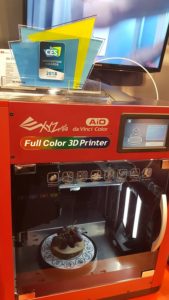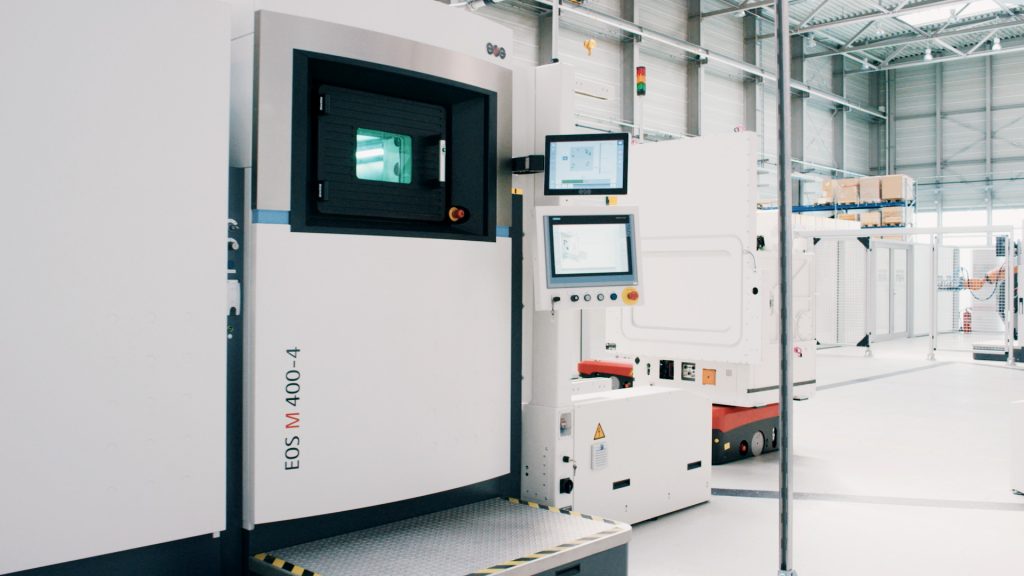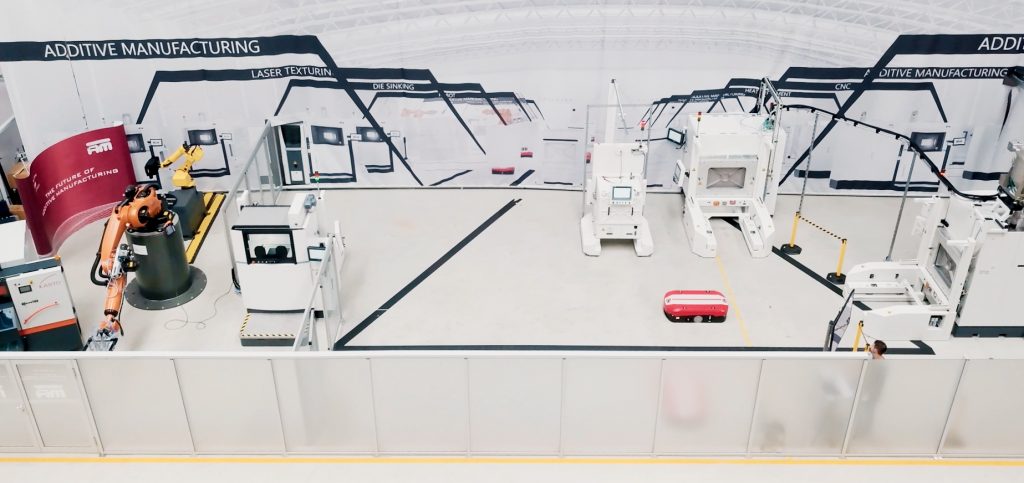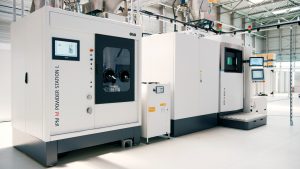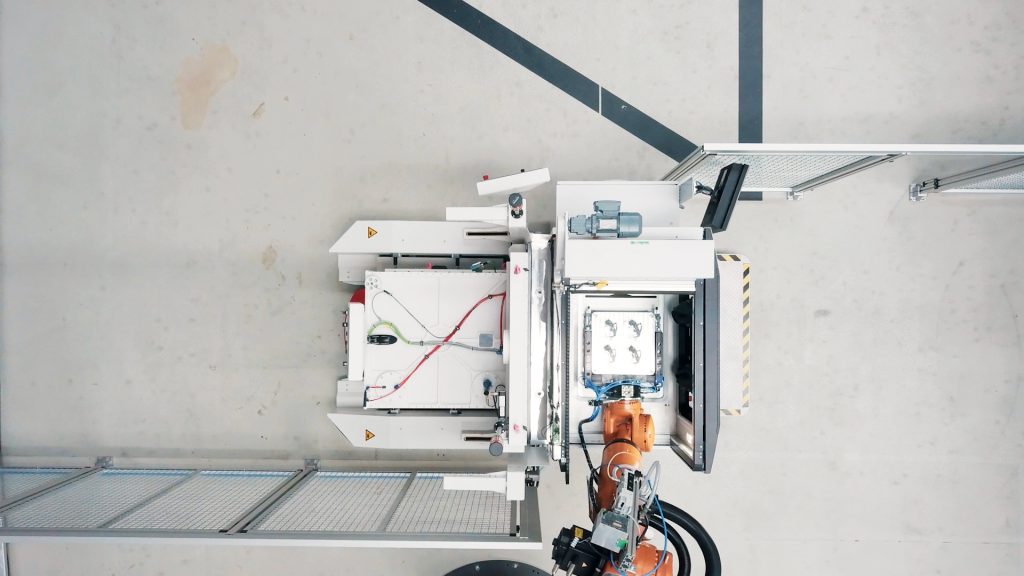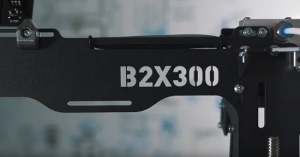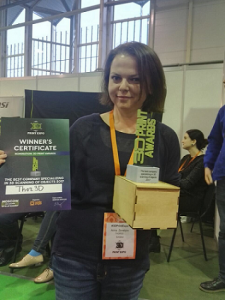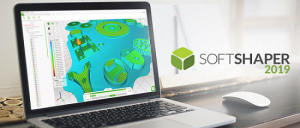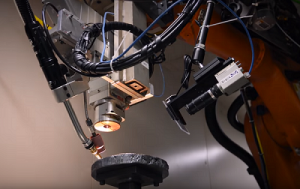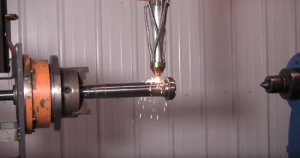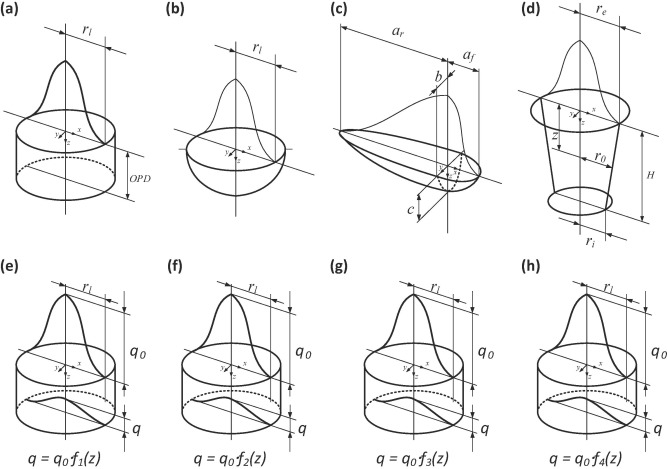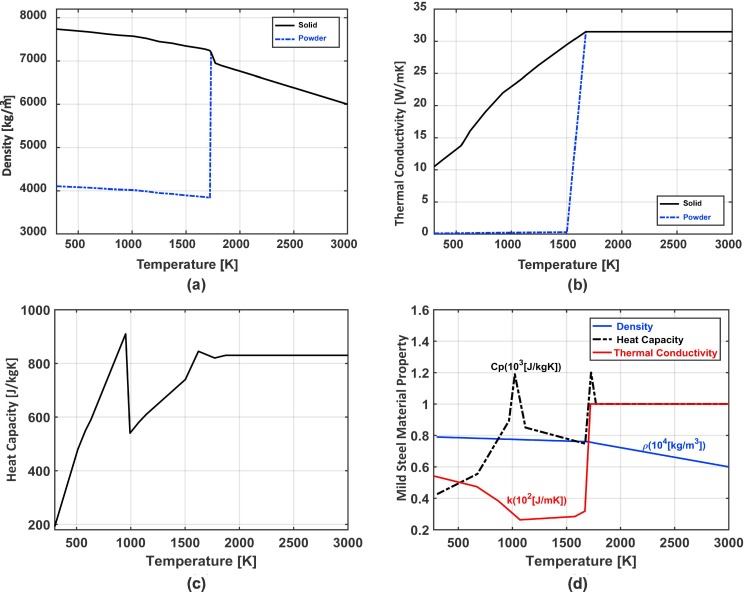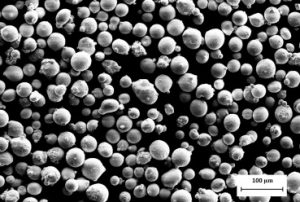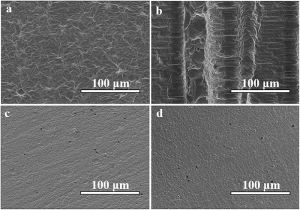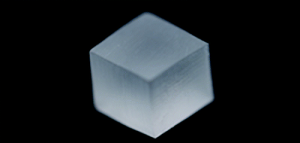One of the oldest industrial exhibitions in Germany opened its doors to the public in Berlin on Friday as IFA 2018 began. Many additive manufacturing companies choose to showcase their latest products at this annual show – last year, for instance, Taiwan-based desktop 3D printer manufacturer XYZprinting introduced its da Vinci Color 3D printer.
At this year’s show, the company will be introducing the consumer-oriented da Vinci Color mini, in addition to exhibiting its award-winning da Vinci Color AiO, which was officially introduced at CES 2018. But on the first day of IFA 2018, the company also announced the official UK launch of the AiO, which it calls the first voice-controlled, full-color FFF 3D printer in the world with an inbuilt engraver and 3D scanner.
“This latest innovation is a significant step forward for 3D printing, particularly for desktop users. Being able to control your printer with something as intuitive as simply speaking will open up 3D printing to a wider range of people,” said XYZprinting CEO Simon Shen.
“The AiO is aimed at those that have not used 3D printing a lot previously or not used it at all. Being able to tell the printer what you want it to do will make it simple to navigate, as well as letting you search from the XYZ 3D gallery. This means that if you would like to find a 3D model of a vase, you would just say ‘search for a vase for me’ and the 3D gallery would bring up all vases on the gallery to choose from.
“The added features of the printer, the scanner and the engraver, make the AiO the most complete desktop 3D printing unit ever developed, giving entrepreneurs and designers the chance to bring their ideas to life.”
The AiO, which stands for All in One, has certainly grown since its first iteration two years ago as the da Vinci 1.0 Pro 3-in-1. The handy desktop 3D printer, scanner, and engraver will give designers, educators, engineers, and entrepreneurs alike the ability to use intuitive voice commands to easily control the system. In addition to 3D scanning objects, users can 3D print full-color objects through the use of simple voice activation, and can later engrave those same prints as well.
Actually, this last may not be true – the da Vinci 1.0 Pro 3-in-1 was only able to engrave objects made out of cardboard, leather, and wood, which the da Vinci Color AiO can’t actually 3D print. But, the old version had the laser engraver as an optional module, while the updated 3D printer features an inbuilt engraver, so maybe things have changed?
Regardless, the da Vinci Color AiO makes it easy for users to replicate and personalize designs with the built-in 3D scanner and engraver. It also features full-color 3D printing – the company’s 3D Color Jet technology mixes and sprays CYMK color droplets onto white PLA filament deposit layer by layer, “achieving full-colour spectrum accuracy and precision,” according to XYZprinting.
The desktop 3D printer also features a new EZ-removable print bed, with a 20 x 20 x 15 cm build volume that helps prints adhere to the bed while still being easy to remove from it. The print bed is also auto-leveling, so you never have to worry about the accuracy of your prints.
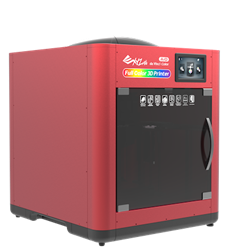 The coolest thing about the da Vinci Color AiO, at least in my opinion, is its voice control. My husband and I just purchased an Amazon Fire Stick, and I’m still tickled at my newfound ability to hold down the microphone button and say things like, “Alexa, go to Netflix” and “Alexa, add cereal to the grocery list.” Imagine how much cooler this feature is with a 3D printer: the da Vinci Color AiO allows users to calibrate the 3D printer, prep their print jobs, pause 3D printing, conduct maintenance on the system, and receive status updates on their prints, all with just their voice. This makes me feel like we’re one step closer to asking the computers on our spaceships to locate Commander Data…
The coolest thing about the da Vinci Color AiO, at least in my opinion, is its voice control. My husband and I just purchased an Amazon Fire Stick, and I’m still tickled at my newfound ability to hold down the microphone button and say things like, “Alexa, go to Netflix” and “Alexa, add cereal to the grocery list.” Imagine how much cooler this feature is with a 3D printer: the da Vinci Color AiO allows users to calibrate the 3D printer, prep their print jobs, pause 3D printing, conduct maintenance on the system, and receive status updates on their prints, all with just their voice. This makes me feel like we’re one step closer to asking the computers on our spaceships to locate Commander Data…
XYZprinting is exhibiting at IFA 2018 through Wednesday, September 5th, in Hall 12, Stand 107 of the Berlin Exhibition Grounds at Messe Berlin. At the event, the company will be launching the da Vinci Color mini, a compact version of its original full-color 3D printer that’s designed for use at home and in schools and offices. The accessible mini 3D printer features an intuitive user experience, thanks to its 5″ color LCD display screen, and will retail for the recommended price of £1,599 beginning in December.
The da Vinci Color AiO will be available for purchase starting in September, for the recommended price of £2,699, through the company’s network of partner resellers.
Discuss this story and other 3D printing topics at 3DPrintBoard.com or share your thoughts in the Facebook comments below.


